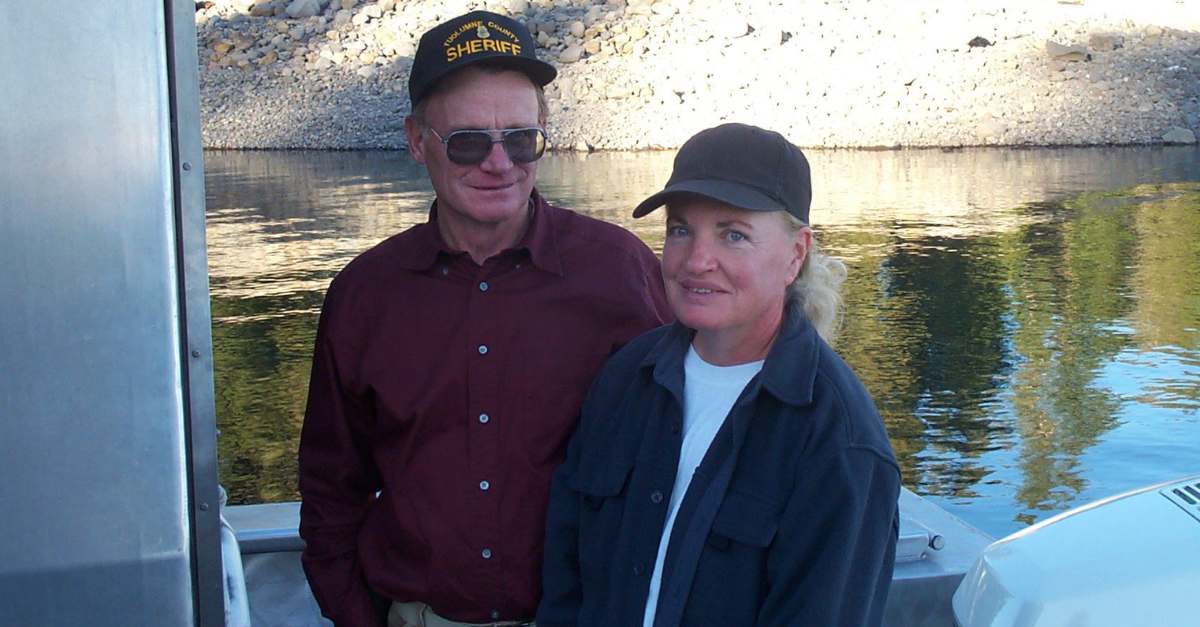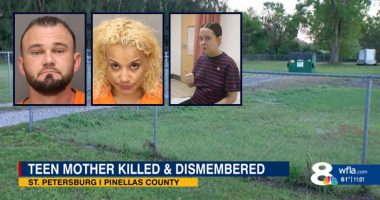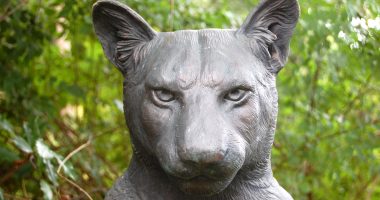When Gene and Sandy Ralston first met as students while on a field research expedition in the Mojave Desert, they had no idea how far their backgrounds in biochemistry, human anatomy and hydrology — studies typically reserved for the world of the living — would ultimately take them into the unexpected realm of criminal justice, the deceased and high-stakes underwater searches.
Now in their mid-70s, the Ralston’s careers as underwater search and recovery specialists has been nothing but one surprise find after another. Since recovering their first body in 1983 with just a small personal boat and a workable knowledge of sonar technology, they’ve since located 132 individuals lost under the waves by either accident or intent. Of those cases, 9 were classified as missing persons and 24 were in connection with active homicide investigations. Miraculously, an additional 2 bodies recovered they were not searching for, but found by chance and were able to deliver back to their families along the way.
Though the underwater search industry was not one they particularly sought out – having originally hailed from careers as scientists in environmental consulting instead – they saw an opportunity to help law enforcement and grieving families locate missing loved ones, and the whole operation flourished from there.

Gene & Sandy Ralston
The Ralston’s first major discovery came about by sheer circumstance, when a woman went missing in the Boise River during flood season, leading the couple to volunteer a whitewater jet boat they had recently built to help look for her in the raging waters. Since their boat was specifically designed to operate in shallow yet rocky conditions, they provided an indispensable search tool and were able to retrieve her body in just a few hours. A few months later, they saved a horse that had been swept away in the same river, permanently solidifying their reputation in the world of search and recovery.
In the years that followed, the couple would lend their skills to a number of missing persons cases – some as sensational as boasting involvements with NASA or the FBI, and others as miraculous and moving as the 1997 case of Gina Herren, whose father had drowned on the Flaming Gorge Reservoir in Wyoming 15 years prior.
“When Gina called, I told her I had no idea if it would be possible to find him,” says Gene on the near impossibility of that recovery when they decided to risk taking it on. “We had found a man who had been missing almost 4 years, but we were willing to give it a try.”
It wasn’t until 1999, however, that the couple began to implement newly developed side scan sonar technology into their search tactics. Side scan sonar, which enables the production of underwater images using soundwaves much like ultrasound, was a game changer in terms of the depth and location accuracy for which it could allow. Using a custom sonar towfish designed by a friend, the Ralstons were able to search as deeply as 850 ft, with images not only appearing in real time aboard the boat but also attaching GPS coordinates to their pixels so as to allowed for an even greater level of accuracy should they need to return.
With indispensable custom technology aboard their boat, as well as a few success stories under their belt, it was only a short matter of time before requests for the Ralston’s help on searches nationwide began to pour in and their recovery missions turned full-time. In 2000, armed with both scientific know-how and experience on watery terrain, Ralston Underwater Search and Recovery was officially launched.
Though they were not formal investigators, the couple’s nuanced understanding of such crucial elements such as the impacts of water temperatures on bodies or physics and floor conditions at certain depths, they quickly caught the eye of law enforcement agencies as far up the ranks as the FBI.
In only their first ever homicide investigation, the FBI briefed the couple on a 4 victim kidnapping case involving potential ties to the Russian mafia and a $1.2 million bank transfer to offshore accounts. Two weeks of exhaustive searching later, and the Ralstons had successfully found the victims’ bodies at the floor of the New Melones Reservoir in the Sierra Nevada foothills, signaling their entrance into official detective territory. Though the mafia connections turned out to be a false lead, their skilled underwater recovery ultimately led to the conviction of 6 individuals involved in the kidnappings and murders.
Beyond the convictions, Gene and Sandy were able to deliver closure to the victim’s families, a goal at the heart and center of all of their recovery missions.
“At 79 years old, we never know how much longer we’ll be able to do this,” admits Gene while explaining their motivations to keep going with their work. “But we’ve seen the grief suffered by families, as well as the legal and financial hardships that most people don’t think about created by not having a body to obtain a death certificate…Many times the local agency having jurisdiction does not have sufficient personnel, experience, equipment or time to devote to a lengthy search, so we know what it means to a family to recover their missing loved one and to bring them some relief.”
Though the technology they use has continued to adapt and improve over the years, the Ralston’s best asset is their ability to ask the right questions. With the keen sense of seasoned investigators, they kick off every search with a period of gathering as much location or vessel information as possible. Even photos or videos taken before or after the incident in question can be invaluable starting points due to the geotagging information the Ralston’s can then collect as well as the environmental landmarks their experience tells them to pinpoint – “waypoints and houses and trees and television antennas, those kinds of things.”
Gene describes their start to every search mission as one of methodical scientific processes, in which the pair spends hours and days researching the impact of certain depths or temperatures on the body under search, as well as gathering and categorizing as much specific details about the incident in question as is available. They then create an informed plan with which they will conduct their search out on the water, complete with hydrographic surveys and precise navigation lines plotted out in advance.
Still, their methodology does not detract from the humanity that plays out in their hunt for information as well. In their experience, probing the causes of an accident or a homicide almost always involves a rehashing of trauma from any witnesses, an obstacle in that it can alter memory and must be worked through compassionately. “We’ve learned that it’s best to interview witnesses ourselves,” says Gene. “And we listen to a witness describe the details of an incident without…giving them leading questions that will make them change their testimony or make them feel as if they’re being interrogated to find a fault.
Whether the information comes from the initial law enforcement investigators or from the family and friends of the missing, a proper search for the Ralstons always boils down to the very small details. Gene and Sandy credit their scientific background with propelling them to this point as self-taught investigators: “Science education teaches you how to think and question and evaluate facts, rather than teaching you what to think and blindly believe.”
Please enjoy our 2024 finalist’s investigation stories below, and VOTE HERE.
Have a tip we should know? [email protected]








